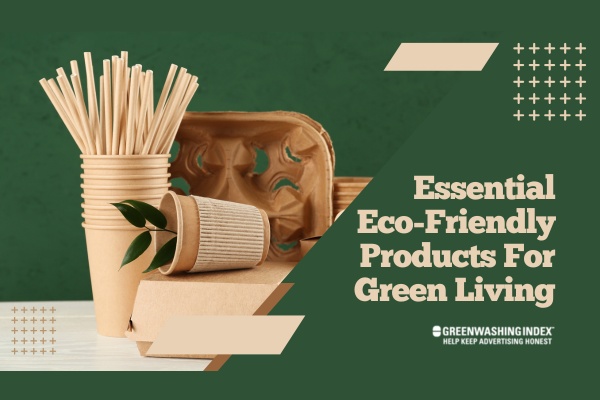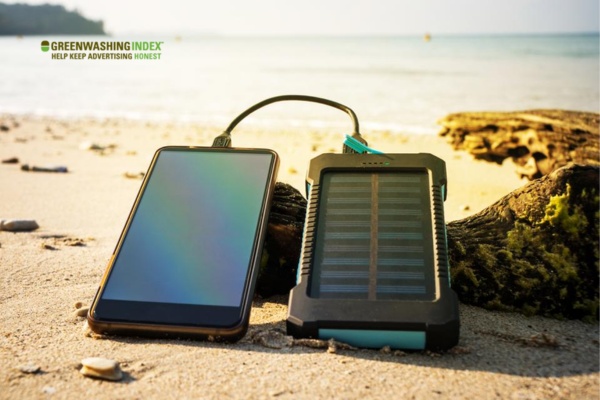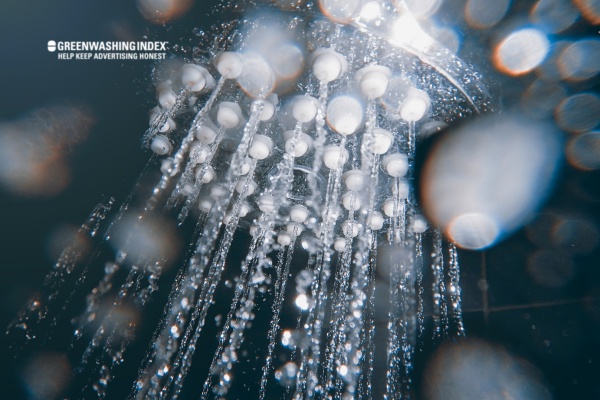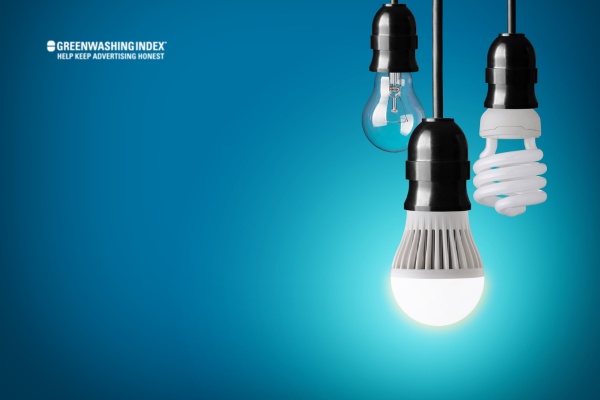

Every choice we make influences the environment, and the shift towards eco-friendly products is a powerful step in redefining our impact. As awareness grows, many are discovering that simple changes can lead to significant benefits for both our health and the planet.
Replacing everyday items with sustainable alternatives that not only reduce waste but also enhance your lifestyle. With a myriad of options available, embracing eco-friendly products is not just a trend; it’s a vital movement towards a sustainable future.
Eco-friendly products, also known as green or environmentally friendly products, are designed to minimize harm to both the environment and human health. These products are made from sustainable materials, are often reusable or recyclable, and are produced through processes that reduce pollution and waste.
The growing awareness of environmental issues has led to a significant increase in the demand for such products, as consumers seek to make more responsible choices in their daily lives. By opting for eco-friendly alternatives, individuals can contribute to the preservation of natural resources and promote a healthier planet.
Exploring eco-friendly alternatives is essential for reducing our environmental impact and promoting sustainability. As awareness of plastic pollution grows, many individuals are seeking out greener options for everyday products. Here are ten must-know green alternatives that can help replace harmful plastics in our lives:
Reusable shopping bags are an eco-friendly alternative to single-use plastic bags, designed to be used multiple times. They are often made from durable materials such as cotton, jute, or synthetic fibers, allowing them to withstand repeated use. The adoption of reusable bags helps reduce plastic waste, which is a significant contributor to environmental pollution.
While the production of reusable bags requires more energy compared to single-use bags, their longevity makes them a more sustainable choice when used frequently.
Key Features of Reusable Shopping Bags:
By choosing reusable shopping bags, consumers contribute to a reduction in plastic pollution and promote a more sustainable lifestyle.
Bamboo toothbrushes are gaining popularity as a sustainable alternative to traditional plastic toothbrushes. Made from bamboo, a rapidly renewable resource, these toothbrushes offer several environmental benefits while maintaining effective oral hygiene. Unlike plastic, bamboo is biodegradable and compostable, significantly reducing plastic waste in landfills and oceans. Additionally, bamboo toothbrushes often feature soft nylon bristles that provide effective cleaning without damaging gums or enamel. Here are some key benefits of using bamboo toothbrushes:
Benefits of Bamboo Toothbrushes:
Switching to a bamboo toothbrush is a simple yet impactful step towards a more sustainable lifestyle, contributing to the reduction of plastic pollution while promoting oral health.
Solar-powered chargers are innovative devices that harness sunlight to generate electricity, allowing users to charge a variety of electronic devices while on the go. These chargers are particularly useful for outdoor enthusiasts, travelers, and anyone in need of a reliable power source without access to traditional electricity.

They operate using photovoltaic (PV) cells, which convert sunlight into electrical energy. With the growing emphasis on renewable energy, solar chargers offer an eco-friendly alternative to conventional charging methods. Below are key features, benefits, and limitations of solar-powered chargers:
Key Features:
Benefits:
Limitations:
In conclusion, solar-powered chargers represent a practical solution for those seeking sustainable energy options while enjoying the convenience of portable charging capabilities.
Cloth diapers, also known as reusable diapers, have gained popularity among parents seeking eco-friendly and cost-effective diapering solutions. Made from natural materials like cotton, bamboo, or hemp, these diapers provide a soft and breathable option for babies.
Unlike disposable diapers, which contribute significantly to landfill waste, cloth diapers can be reused multiple times, making them a sustainable choice. While the initial investment may be higher, the long-term savings and reduced environmental impact make cloth diapers an appealing option for many families.
Benefits of Cloth Diapers:
Limitations of Cloth Diapers:
In summary, while cloth diapers present certain challenges, their benefits in terms of cost savings, environmental impact, and baby comfort make them an increasingly popular choice for eco-conscious families.
Composting at home is an effective way to recycle organic waste, reduce landfill contributions, and create nutrient-rich soil for gardening. This process involves the biological decomposition of organic materials, such as food scraps and yard waste, into compost that enriches soil health and supports plant growth.

By engaging in home composting, individuals can significantly decrease methane emissions from landfills, which are a major contributor to climate change. The following outlines the essential steps and considerations for successful home composting.
Steps for Composting at Home:
Natural cleaning solutions are an eco-friendly alternative to conventional cleaning products, offering effective cleaning power without harmful chemicals. These solutions utilize common household ingredients that are safe for both the environment and human health.
By making your own cleaning products, you can control the ingredients, reduce plastic waste, and save money. Below are some popular recipes for creating effective natural cleaners at home.
Homemade Natural Cleaning Solutions:
All-Purpose Cleaner:
Soft-Scrub Cleaner:
Disinfectant Wipes:
Glass Cleaner:
Carpet Freshener:
Using these natural cleaning solutions not only helps maintain a clean home but also contributes to a healthier environment by minimizing chemical exposure.
Water-saving shower heads help your home use less water when you take a shower. They work by mixing air with water or by making the water droplets come out in a way that feels like more water than it really is. This means you can still enjoy your shower without using too much water.

When you use a regular shower head, a lot of water comes out fast. But with a water-efficient one, it cuts down on the amount you use. For example, old shower heads might use up to 5 gallons of water per minute. A water-saving shower head uses around 2 gallons or even less per minute.
So how does this save water? Let’s say someone takes a 10-minute shower every day. With an old-style head, they could be using about 50 gallons each time they wash! Now, if they switch to a water-efficient head using only 2 gallons per minute, they’d only use 20 gallons per wash instead. That’s saving about 30 gallons of water each time someone showers!
This change can make a big difference in your home’s total water use and can cut down on your utility bills because heating less water saves energy too!
When we talk about organic foods, we mean foods that are grown without synthetic pesticides or fertilizers and without genetic engineering or radiation.
Eating organic is good for our health because these types of foods usually have more beneficial nutrients like antioxidants because of the way they are grown.
For our planet, organic farming is better as well because it doesn’t harm the soil with chemicals, which means farms can keep growing food there for longer periods without hurting the land.
Organic farming also helps with taking care of our wildlife – since no harsh chemicals are used that could hurt animals or insects like bees which we need to pollinate plants.
In short, when we choose organic foods over others:
By eating organic food whenever possible, not only do we get healthier food now but we also help make sure there will be healthy food grown in the future too!
LED light bulbs, or Light Emitting Diodes (LEDs), represent a significant advancement in lighting technology. Unlike traditional incandescent or fluorescent bulbs, LEDs are energy-efficient, durable, and long-lasting. They produce light through a semiconductor process known as electroluminescence, which allows them to emit light without generating excessive heat.

This efficiency translates to lower energy bills and reduced environmental impact. As the technology continues to evolve, LED bulbs are becoming increasingly versatile and affordable, making them a popular choice for both residential and commercial applications.
LEDs shine brighter than conventional lights while using much less electricity – typically up to 75% less for the same brightness! This means LED lights turn more electricity into light rather than wasting it as heat (like older bulbs do).
Since LEDs don’t waste electricity heating up like old bulbs do:
By switching over to LED bulbs at home or work, not only will you cut costs on energy bills but also contribute towards saving energy on a bigger scale which helps combat climate change!
Low-flow toilets are designed to conserve water while providing effective waste removal, making them an essential upgrade for environmentally conscious homeowners. Since their introduction in the 1990s, these toilets have evolved significantly, utilizing advanced flushing technologies to maintain performance while using less water.
By replacing older models that can use up to 7 gallons per flush with low-flow options that use only 1.6 gallons or less, households can save substantial amounts of water and reduce their utility bills. Below are some key benefits and features of low-flow toilets.
Benefits of Low-Flow Toilets:
In summary, low-flow toilets not only provide significant savings on water bills but also contribute positively to environmental conservation efforts, making them a wise choice for modern households.
In our pursuit of becoming more eco-friendly, we always find ourselves hung up on the question of ‘How?’ Learning to live an eco-conscious lifestyle is a journey that requires time and dedication.
Fortunately, several avenues of education and participation can help us accelerate this learning curve. Here are a couple of ways we can immerse ourselves deeper into the world of eco-friendly living:
Partaking in community activities is one fantastic way to understand green alternatives and their implications better. Let’s explore how engaging with local initiatives can become stepping stones towards adopting an earth-friendly lifestyle:
As surprising as it may sound in the context of sustainability and traditional green living techniques, technology today has equipped us with numerous tools that make leading an eco-friendly lifestyle much more approachable:
Remember, adopting an eco-conscious lifestyle is not about being perfect but about making consistent efforts to reduce our ecological footprint. Whether you participate in community endeavors or leverage tech for learning, every small step counts towards fostering a sustainable world.
They are switching to eco-friendly products, which aids in decreasing the carbon footprint, as they are often made with sustainable manufacturing practices and organic materials. These products are designed to last longer, thereby reducing waste.
The quickest and most convenient change you can make is to use reusable shopping bags. They’re affordable, simple to carry, and significantly cut down on plastic waste each time you shop.
Eco-friendly products help ensure a sustainable future by reducing pollution, conserving natural resources, and promoting ecological balance. These green alternatives also inspire businesses and consumers alike toward more environmentally conscious choices.
Yes, transitioning to eco-friendly products has a considerable impact on our planet. From cutting down resource usage to shrinking landfill waste, every small step towards an earth-friendly lifestyle contributes significantly in preserving our environment for future generations.
Transitioning to eco-friendly products can significantly enhance our environmental impact. By embracing sustainable alternatives, individuals not only reduce their carbon footprint but also contribute to a healthier planet. It sounds like each small change, whether it’s using reusable bags or opting for natural cleaning solutions, plays a vital role in fostering sustainability.
As more people adopt eco-conscious habits, the cumulative effect can lead to substantial improvements in ecological balance and resource conservation. Ultimately, choosing eco-friendly products reflects a commitment to preserving the environment for future generations.

Don't let aphids, slugs, and caterpillars ruin another plant. Take back control with simple, natural methods that actually work.